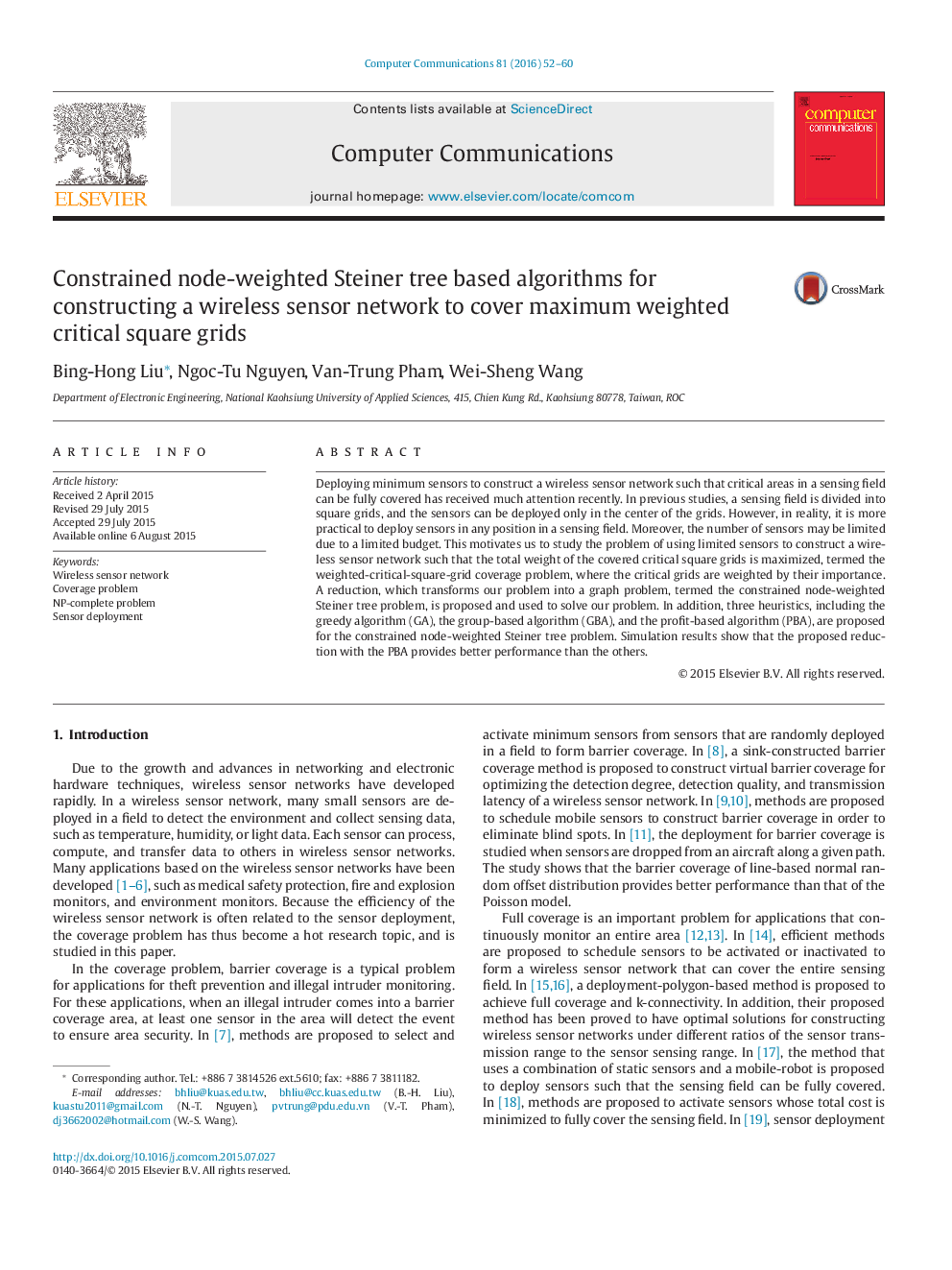ترجمه فارسی عنوان مقاله
الگوریتم های مبتنی بر درخت Steiner گره وزن محدود برای ساخت شبکه حسگر بی سیم برای پوشش حداکثر وزن شبکه های مربع حیاتی
عنوان انگلیسی
Constrained node-weighted Steiner tree based algorithms for constructing a wireless sensor network to cover maximum weighted critical square grids
| کد مقاله | سال انتشار | تعداد صفحات مقاله انگلیسی |
|---|---|---|
| 67463 | 2016 | 9 صفحه PDF |
منبع

Publisher : Elsevier - Science Direct (الزویر - ساینس دایرکت)
Journal : Computer Communications, Volume 81, 1 May 2016, Pages 52–60
ترجمه کلمات کلیدی
شبکه حسگر بی سیم؛ مسئله پوشش؛ مسأله NP-complete؛ استقرار سنسور
کلمات کلیدی انگلیسی
Wireless sensor network; Coverage problem; NP-complete problem; Sensor deployment

